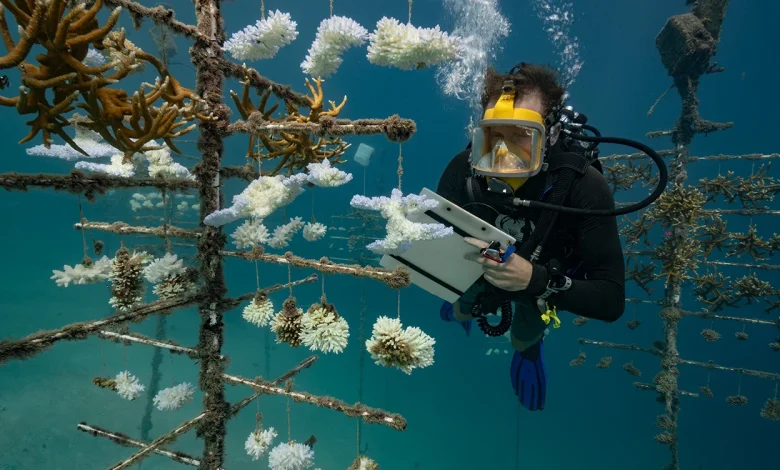How badly does climate change affect coral? I dive to find out
By putting on my scuba suit and keeping track of corals in French Polynesia, I hope to determine how much stress they’re under.
The corals that my colleagues and I study in Mo‘orea, French Polynesia, are sea polyps that grow in symbiosis with unicellular algae called zooxanthellae. Most of these corals’ nutrients come from the sugars produced by algal photosynthesis.
Usually, human-built coral nurseries are located at the bottom of the sea. However, here at the Centre for Island Research and Environmental Observatory (CRIOBE) in Mo‘orea, affiliated with the University of Perpignan in mainland France, we prefer the floating mobile trees that I’m looking at in the picture. These allow us to see the corals from all perspectives. They also make it easy to detect certain problems, such as invasive algae.
In this picture, there are two coral species — Acropora pulchra and Acropora cytherea. The pulchra has retained its dark yellow colour but the cytherea — which is usually light brown or purple — has turned white.
This bleaching happens when the water temperature rises above normal for a long period. This leads to the coral expelling the microalgae. Without them, coral polyps turn white and starve to death. This phenomenon is getting more common and can destroy a whole colony in a few months.
One of my team’s main tasks is to dive in the coral nurseries to measure various parameters. When we dive, we take a plastic sheet that helps us to identify each species. We register the water temperature, the colour of the corals, whether there are signs of bleaching and if any polyp has died.
Certain polyps seem to be more resilient than others to temperature stress. We want to learn whether this is really the case and, if so, why. Finding answers might help us to protect corals, but of course what would really help is an end to pollution and global warming.

